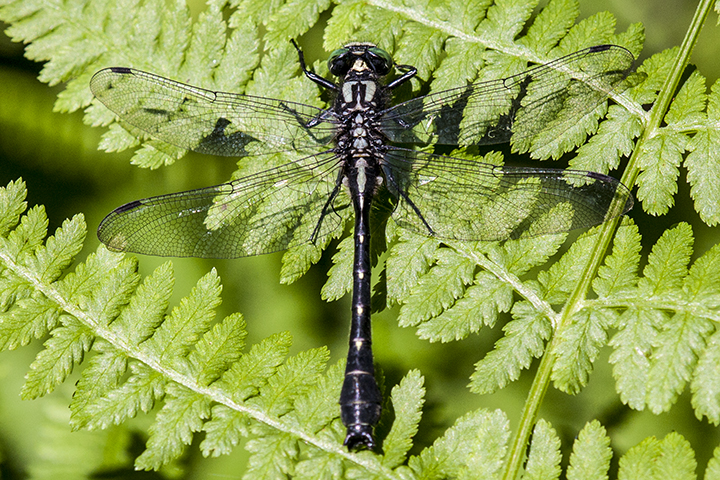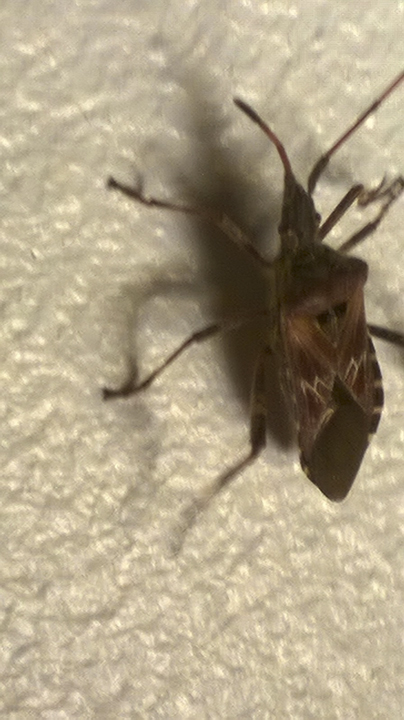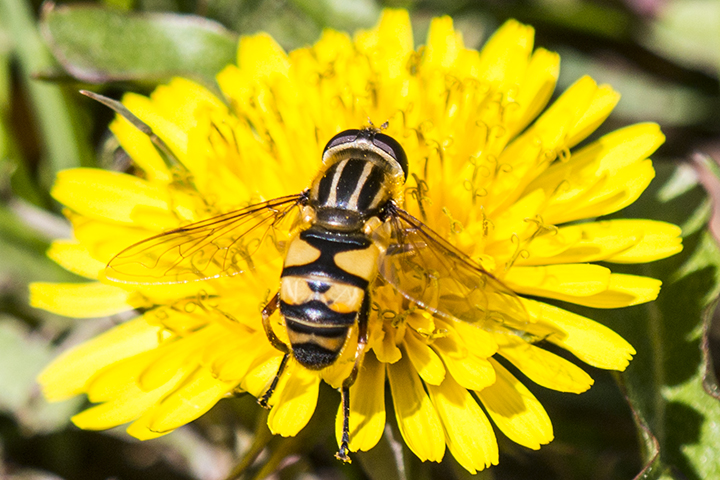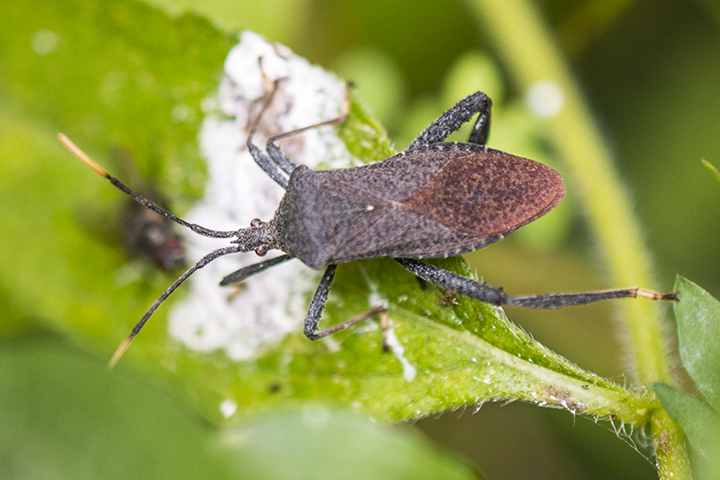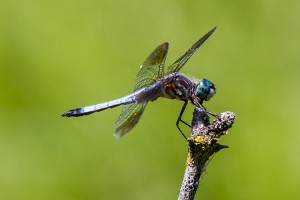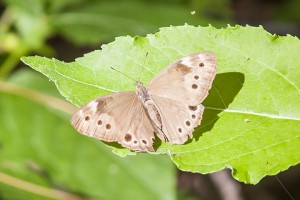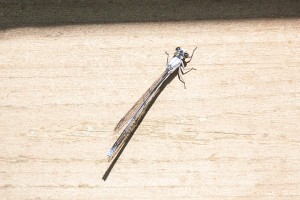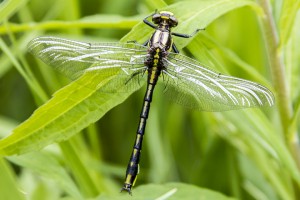Green-faced clubtail (Gomphus viridifrons) is an early season, medium-sized clubtail. While it is more common in the northeast than in Minnesota, it is uncommon and considered rare over most of its range. It is found from mid-May to mid-July near rapid medium streams and rivers with gravel, silt, sand, and rocks on the bottom. Males are most active in late afternoon, especially under cloud cover.
Green-faced clubtail is distinguished by the face with only light markings, missing middle stripe on the side of the thorax, unusually small abdominal spots, no spots on abdominal segments 8 through 10, and abdominal segment 9 shorter than segment 8.
http://minnesotaseasons.com/Insects/green-faced_clubtail.html

